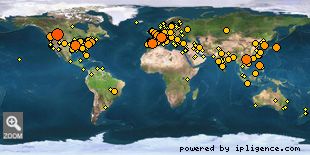 » NMR Jobs
» NMR Jobs |
|
|
|
|
|
|
 » Cool papers
» Cool papers |
|
|
|
|
|
|
 » NMR books
» NMR books |
|
|
|
|
|
|
 » NMR theses
» NMR theses |
|
|
|
|
|
|
 » NMR blogs
» NMR blogs |
|
|
|
|
|
|
 » NMR news
» NMR news |
|
|
|
|
|
|
 » NMR tweets
» NMR tweets |
|
|
|
|
|
|
 » NMR videos
» NMR videos |
|
|
|
|
|
|
 » NMR pictures
» NMR pictures |
|
|
|
|
|
|
 » Online Users: 326
» Online Users: 326 |
| 0 members and 326 guests |
| No Members online |
| Most users ever online was 1,278, 01-09-2024 at 07:38 AM. |
|
 » Welcome!
» Welcome! |
Welcome, NMR world!

Our visitors map.
|

 Reconstitution and resonance assignments of yeast OST subunit Ost4 and its critical mutant Ost4V23D in liposomes by solid-state NMR Reconstitution and resonance assignments of yeast OST subunit Ost4 and its critical mutant Ost4V23D in liposomes by solid-state NMR |
|
Feb 29, 2024 - 10:00 PM - by nmrlearner
|
 Reconstitution and resonance assignments of yeast OST subunit Ost4 and its critical mutant Ost4V23D in liposomes by solid-state NMR
Reconstitution and resonance assignments of yeast OST subunit Ost4 and its critical mutant Ost4V23D in liposomes by solid-state NMR
Abstract
N-linked glycosylation is an essential and highly conserved co- and post-translational protein modification in all domains of life. In humans, genetic defects in N-linked glycosylation pathways result in metabolic diseases collectively called Congenital Disorders of Glycosylation. In this modification reaction, a mannose rich oligosaccharide is transferred from a lipid-linked donor substrate to a specific asparagine side-chain within the -N-X-T/S- sequence (where Xâ??â?*â??Proline) of the nascent protein. Oligosaccharyltransferase (OST), a multi-subunit membrane embedded enzyme catalyzes this glycosylation reaction in eukaryotes. In yeast, Ost4 is the smallest of nine subunits and bridges the interaction of the catalytic subunit, Stt3, with Ost3 (or its homolog, Ost6). Mutations of any C-terminal hydrophobic residues in Ost4 to a charged residue destabilizes the enzyme and negatively impacts its function. Specifically, the V23D mutation results in a temperature-sensitive phenotype in yeast. Here, we report the reconstitution of both purified recombinant Ost4 and Ost4V23D each in a POPC/POPE lipid bilayer and their resonance assignments using heteronuclear 2D and 3D solid-state NMR with magic-angle spinning. The chemical shifts of Ost4 changed significantly upon the V23D mutation, suggesting a dramatic change in its chemical environment.
... [Read More]
|

 0 Replies | 117 Views
0 Replies | 117 Views
|
|
 » BioNMR wiki
» BioNMR wiki |
|
|
|
|
|
|
 » NMR discussion
» NMR discussion |
|
|
|
|
|
|
 » NMR conferences
» NMR conferences |
|
|
|
|
|
|
 » NMR software
» NMR software |
|
|
|
|
|
|
 » Pulse sequences
» Pulse sequences |
|
|
|
|
|
|
 » NMR community
» NMR community |
|
|
|
|
|
|
 » NMR presentations
» NMR presentations |
|
|
 » NMR web resources
» NMR web resources |
|
|
|
|
|
|
 » NMR feature requests
» NMR feature requests |
|
|
 » NMR bookmarks
» NMR bookmarks |
|
|
|
|
|
|
 » Stats
» Stats |
Members: 3,202
Threads: 25,741
Posts: 26,127
Top Poster: nmrlearner (23,185)
|
| Welcome to our newest member, bpadmanabhan |
|



